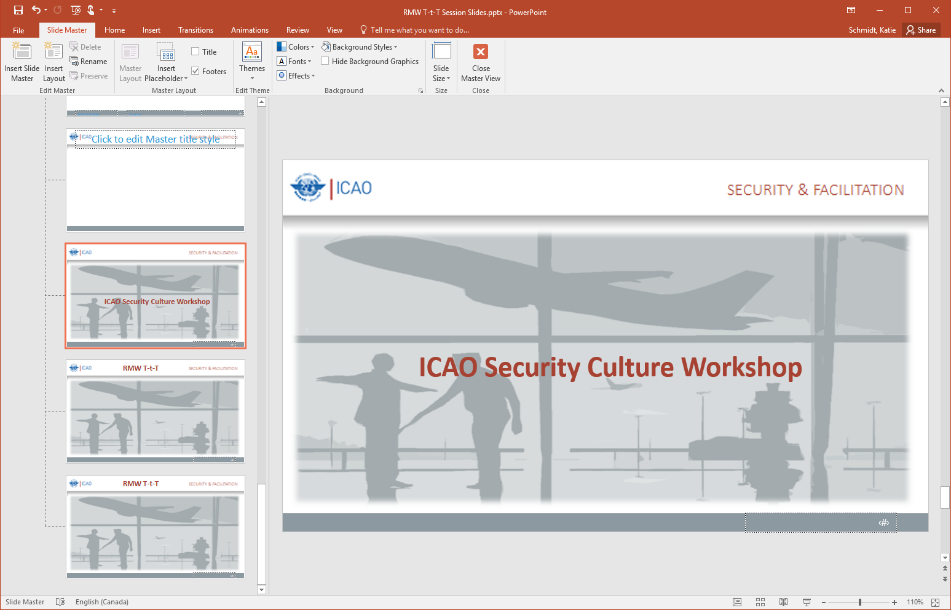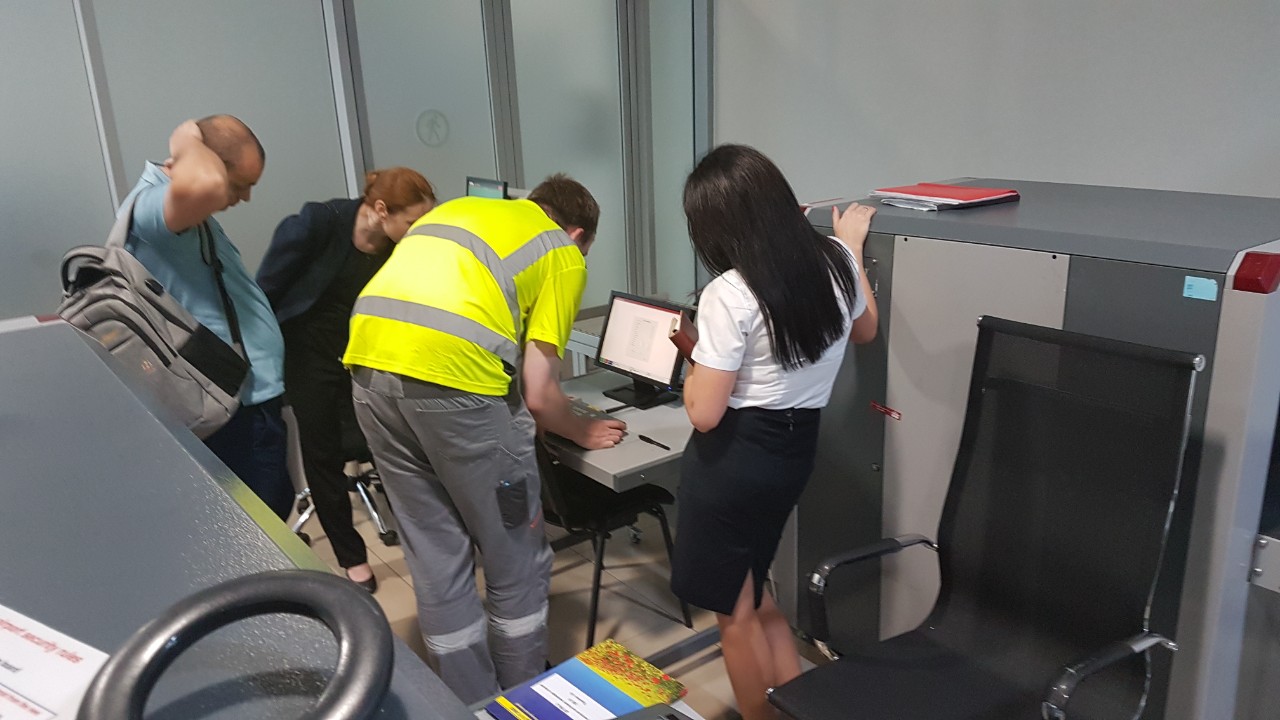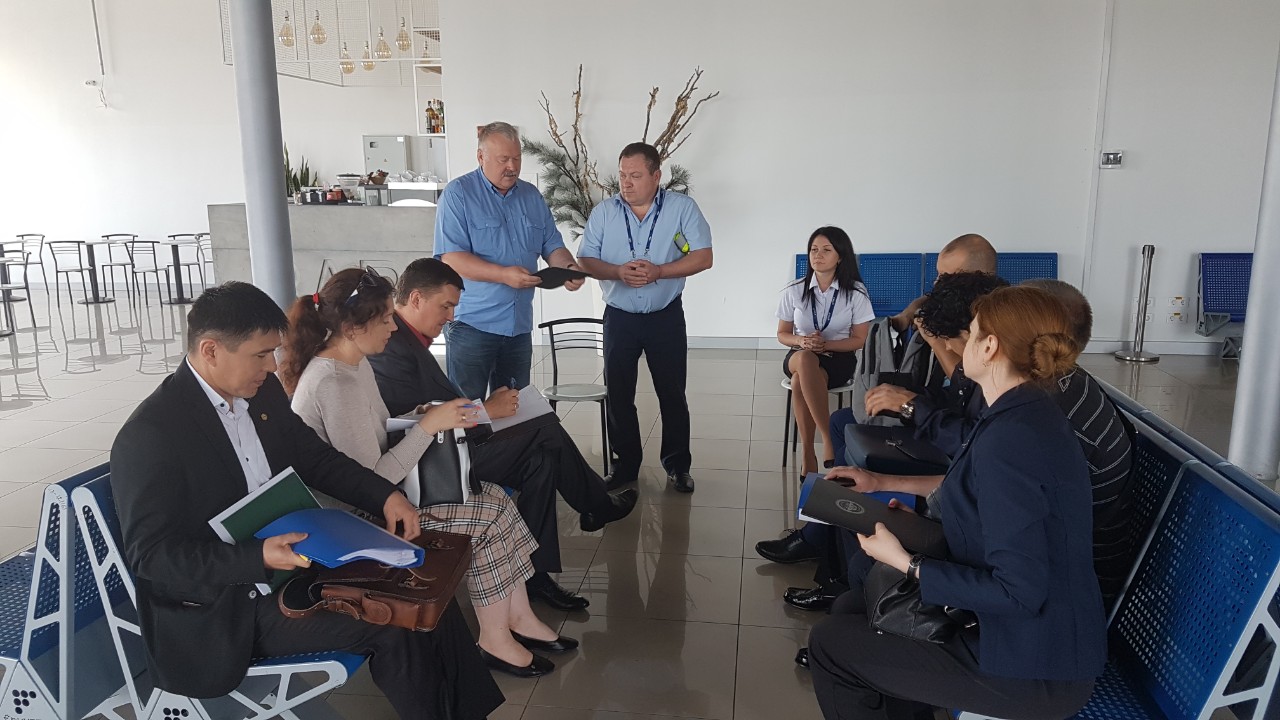At ICAO, one of our key priorities is to develop a strong and effective security culture in aviation. It is a central element of the ICAO Global Aviation Security Plan (GASeP) and provides the rationale for the Year of Security Culture 2021. The ICAO Security Culture Toolkit and ICAO Security Culture Campaign ‘Starter Pack’ are great resources that help in our security culture endeavours. Both documents are available on the ICAO Security Culture website. They contain advice and best practices on establishing, changing and maintaining positive security behaviours. The documents also contain tips on enhancing security culture and delivering local security culture campaigns at our airports.
ICAO’s aviation security assistance and training builds in the promotion of a positive security culture. A strong security culture complements any and all training that we, or any other organization, deliver. If you do not have dedicated staff in all areas of the organization, who understand the threats to civil aviation, then implemented security measures will only go so far.
Staff, including service providers and members of the wider aviation community, are the ‘eyes’ and ‘ears’ of an organization. So, where possible, we must tap into their knowledge and ability to identify possible vulnerabilities that may not be identified in a traditional way. To this end, all of ICAO’s aviation security training now embeds security culture best practices within the content.
 Very soon ICAO will introduce the ICAO Security Culture Workshop, as developed by the ICAO Working Group on Training of the Aviation Security Panel of Experts. The workshop builds upon identified security culture best practices and keys to implementation. It will take participants through a number of practical exercises and discussions, to highlight why an effective security culture is important in aviation. It will also share guidance and advice on how to develop and implement security culture.
Very soon ICAO will introduce the ICAO Security Culture Workshop, as developed by the ICAO Working Group on Training of the Aviation Security Panel of Experts. The workshop builds upon identified security culture best practices and keys to implementation. It will take participants through a number of practical exercises and discussions, to highlight why an effective security culture is important in aviation. It will also share guidance and advice on how to develop and implement security culture.
Next Steps
It is important that everyone in aviation takes practical and concrete actions now to promote a positive culture. This will help us make the Year of Security Culture 2021 a success.
I wish to highlight the following 6 tips on embedding and sustaining security behaviours. Tips, which when implemented effectively, will ensure a strong security culture exists in your organization and in the airport environment.
Tip 1: High-level e.g. CEO/Board level endorsement of policies and procedures that define security culture, and what effective security looks like
Security culture develops because of the strategic direction agreed by senior managers, as well as the associated behaviours managers demonstrate and want staff to follow. Senior managers need to lead from the front and act as role models in delivering a strong and effective security culture. For example, not being subject to exemptions from security measures or encouraging workarounds!
Those in leadership positions need to support local security culture initiatives and campaigns. Support will not negatively impact airport business. Indeed a positive security culture provides a deterrence against criminal activities, with staff thinking and acting in more security-conscious ways. A strong and effective security culture also results in increased customer and passenger satisfaction, as all feel safe in the airport environment.
Tip 2: Threat awareness in aviation
All staff should understand the nature of the threats that they and their organization face. Without this awareness, there will be a lack of desire to embed a positive security culture.
When briefing and training staff, it is recommended that real-life examples of threats and attacks against aviation be used. This will help the message to resonate with staff. Real-life examples underscore how a threat may have operational, financial, and reputational consequences, affecting personnel safety and job security. This will help staff identify (and report) suspicious activity. It will also help staff to be mindful of their own behaviour, as well as that of colleagues, and enhance vigilance.
Tip 3: Staff rewards
Staff, who already display good security behaviour and awareness, should be acknowledged and encouraged to continue displaying such. If staff receive little or no positive feedback when trying a new security behaviour, or they associate the behaviour with a negative response, they may be less likely to perform the behaviour again. A reward approach to create and maintain staff buy-in can have a positive change. One suggestion is handing out vouchers on a random basis for a coffee/snack redeemable at the airport when good security behaviour is observed.
Tip 4: Regular training, information, advice and support
Staff can become complacent about risks and may believe that they have no contribution to make to security. Staff need to be provided with the necessary training, information, advice and support. This will ensure they know what behaviours are expected of them and have the confidence to exhibit those behaviours.
Tip 5: Staff communication
Security messages should be delivered through a variety of methods to staff:
- Electronic – email, apps, desk drops, and the intranet
- Print – posters, newsletters, leaflets and advertising
- Interactive security events and exercises
- Meetings such as staff briefings, airport pass collection, and training
- Role profiles or job descriptions and regular performance appraisals and rewards schemes
- Announcements, including public announcements
- SMS messages or a text service that allows staff (and the public) to report suspicious incidents discreetly and anonymously 24 hours a day
Your airport communication and human resource teams should be able to help in communicating and reinforcing security messages, thereby helping to build a positive security culture amongst staff.
Managers should identify key messages that need reinforcing based on current airport vulnerabilities and risks, as well as the behaviours all staff are expected to follow. This could include messages on:
- The importance of staff vigilance
- Wearing and displaying airport passes
- The reporting of suspicious behaviour
Everyone has a role to play in delivering security messages. Security is everyone’s responsibility.
To help motivate all of the staff working in the operation, you may consider delivering briefings from a credible external expert. For new staff attending their airport induction course, messages may be best delivered by the Head of Security. Enthusiastic staff volunteers can also be very effective security ambassadors, speaking to staff on their own terms.
Tip 6: Security culture implementation plans with clearly defined timelines, deliverables and responsibilities
Changing security behaviour in aviation requires leadership, motivation and a clear and coordinated strategy. This will help to ensure that interventions are consistent, practical and meaningful across your airport.
For airport security culture plans and local campaigns to succeed, they should include:
- Clear aims (vision) with full leadership support
- Timelines, milestones and ways to measure impact
- A senior project manager and/or a visible security culture champion
- A budget and resources (including possible sponsors) for staff communication
- Wider security messages
- Multi-agency support, since security should be everyone’s responsibility
The ability to review and amend security culture plans and local campaigns is also very important, both to identify the parts that work and those that do not. There is no point in sending out security messages to staff if people ignore them!
Many, if not all, of these tips rely on a few clear things: leadership buy-in, clear communication and training. Along with embedding security behaviours in day-to-day operations through stakeholder support and project planning.
If you would like to learn more about this priority area of work, please refer to the ICAO Security Culture website.
About the Author
David Sterland, Chief, Implementation Support and Development Section, has been working in the international civil aviation sector since 1988, specializing in aviation security and facilitation since 1999. He held a range of commercial, operational and security management roles with British Airways, the UK Department for Transport, and airport operator BAA. He joined ICAO in 2011 and has held aviation security and facilitation roles in HQ and the Middle East Regional Office in Cairo. David assumed the role of Chief, ISD-SEC Section in the Air Transport Bureau in January 2018. His work focuses on providing aviation security assistance and training to the Member States of ICAO.








